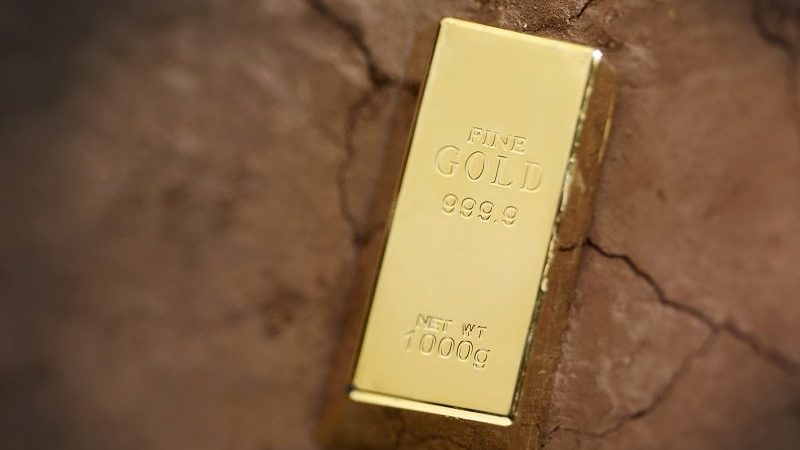One might expect a drop in inflation expectations to knock inflation-tracking gold, but investment managers report increased excitement around the asset class.
The Bank of America Fund Manager Index found just 19% of fund managers predicting global consumer price index to rise over the next 12 months, a reversal from its peak of 82% in April 2018, yet the appeal of the defensive precious metal seems undimmed. A key driver will be the weakening dollar which has dropped against sterling over the last month and currently sits at $1.2955 against the pound.
The asset class also saw a mini rally in November last year driven by political instability – not least Italy’s budget standoff with the European Union and the US-China trade war. Its price has stabilised at approximately $1,300 per ounce.
Keynesian economics from Ocasio-Cortez
Scottish Investment Trust fund manager Alistair McKinnon is one advocate of the asset class: “Gold excites me. It is the only money that survives the excesses of humanity. Currencies get corrupted and their value drops to zero. Governments can create infinite amounts of everything else.”
McKinnon increased allocation to Gold from 5-10% in the last quarter, doubling investment from one to two gold miners. Holdings comprise Australian firm New Crest Mining and US firm New Mont Mining.
He is excited by the asset class for two reasons. First, he argues that the value of gold is at a low, at $1,300 per ounce, compared with $2,000 in 2012 (during the sovereign debt crisis). Second, he explains that the global mood has changed regarding increased government spending with President Trump running a $1tn dollar deficit, US congresswoman Alexandria Ocasio-Cortez espousing the neo-Keynesian modern monetary theory, and Andrés Manuel López Obrador, known as Amlo, in Mexico espousing similar ideas.
“Mining is the most attractive gold form in my opinion,” he said. “Over the last 15 years investors have tended to opt for gold ETFs, as such the once expensive miners have become relatively inexpensive, it’s a good time to buy.”
Architas senior investment manager Nathan Sweeney has also increased holdings of gold this year from 3-5% across his range of seven funds. Sweeney said: “Although it doesn’t deliver an income the asset tracks inflation and so delivered returns.”
Dollar strength is inversely correlated with the asset class but, like McKinnon, Sweeney expects the currency to weaken further in coming quarters. There are other factors at play too, he says: “Quantitative tapering contributed to increased volatility in Q3 and Q4 and there has been a slow down with speculation around recession.”
BMO Gam fund manager Gary Potter is taking a similarly defensive position with at least 5% of assets in his funds changing hands from bullish/neutral to defensive over the last quarter. However, he is not interested in gold. “We actually reduced our small gold holding this year, since the lack of yield makes it so hard to value.”
Absolute returns, cash and low vol
In light of quantitative tapering-induced volatility, trade wars and an apparent peak in the earnings cycle, Potter is increasing defensive stocks. “We have increased absolute return holdings and market neutral positions” he said. These include the SQN Asset Finance Income Fund Ordinary NPV Dividend. He has also moved money from mainstream equities to alternatives including the Darwin Leisure Property fund.
Head of active portfolios at AJ Bell Ryan Hughes built shock absorbers into his active portfolio launched last February. Like Potter he likes absolute return funds – he holds the M&G Absolute Return Bond and Janus Henderson UK Absolute Return funds. He argues that the profile they offer is like commercial property but with fewer headwinds. “It has a similar risk return profile – Libor +2% over the long term but with low volatility.”
Cash is another safe haven and with the increase in UK interest rates from 0.5% to 0.75%, and the US Federal Reserve rate hike from 0.25% in 2015 to 2.00-2.25% currently, its appeal is not difficult to understand. Wellian Investment Solutions CIO Richard Philbin uses it to balance risk in EM equities – he has increased holdings from 2% to 5% over the last 12 months, and when short dated bonds are taken into consideration, cash holdings can be as much as 10-15%.
Sweeney increased his holding from low single digits to between 8-9% at strategic intervals (the selloffs of September and December last year) but uses other vehicles to reduce volatility in EM markets. He has increased his holding in the Robeco QI Emerging Conservative Equities fund and it currently makes up about 50% of EM equity exposure in each of the seven funds he runs.
He has increased exposure to low volatility funds focused on other regions too, these include the iShares Edge S&P 500 Minimum Volatility Ucits ETF | SPMV.











